Photographer Dia Mrad captures aftermath of 2020 Beirut explosion
Architecture-trained photographer Dia Mrad’s first solo show, ‘The Road to Reframe', captures local architecture after the Beirut explosion of 2020, in terrible, dramatic, ‘surrealist' stillness
Dia Mrad - Photography
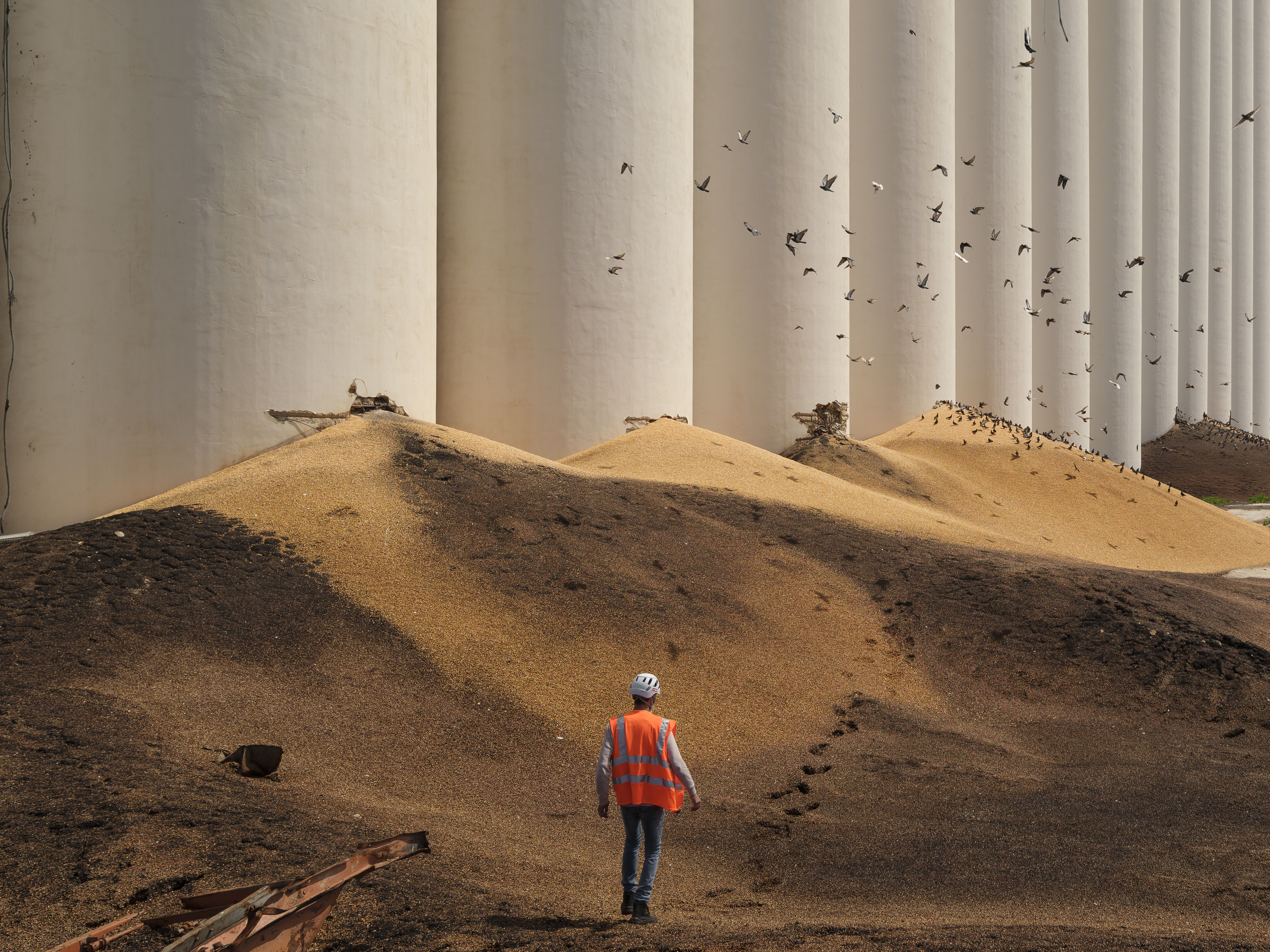
Through his first ever solo exhibition, ‘The Road to Reframe', architecture-trained photographer Dia Mrad attempts to capture the essence of the Mediterranean city following the devastating Beirut explosion that took place in its port in the summer of 2020.
The show presents two series of photographs. ‘The Silos Experience’ was shot in and around the grain silos of the port of Beirut, ground zero of the blast of 4 August 2020, and it contains 28 shots taken in March 2021. The second series, ‘The Morning After' was created on 5 August 2020 and comprises 11 pieces. The body of work tells the story of Mrad's personal experience, depicting with mesmerising, dramatic and terrible stillness the destructive, ‘surrealist' impact of the event. Here, we caught up with the artist to find out more.
Wallpaper*: Please could you tell us about your background? What attracted you to photography?
Dia Mrad: Photography was always an integral part of my creative process. I decided to study architecture, and during my studies I was inspired by an industrial building with trees growing out of it. I snapped a photo with my old Nokia at the time and I thought: ‘This is it! I want to design buildings that look this cool!' I eventually realised, not too long ago, that I misinterpreted my initial inspiration. It should have been: ‘I want to take photos of architectural buildings, and make them look this crisp!' Luckily, my architecture education was very photo-focused.
In March 2019, on a family trip to France and Italy, as I was capturing images of the magnificent French and Italian architecture, I kept thinking of Beirut, reflecting on the rough diamond that’s there, but not quite there. Beirut, a city that has an equally, if not more, interesting and rich architecture as Europe. It triggered a series of questions that has led to my intimate relationship with Beirut and the way in which I photograph. Why isn’t our architecture given the same value? Why isn’t it shown and celebrated, why isn’t it open and accessible for the people to see? Why is it the subject of greed and unchecked negligence, and why is it so easy for some of us to destroy it and replace it with new construction?
The issue of historical preservation and conservation was already at the forefront of my academic journey. The urgency to save Beirut's heritage was always there for me, but it was beyond my wildest imagination that all this destruction would happen in one second and that everything would be pulverized as it so sadly was!
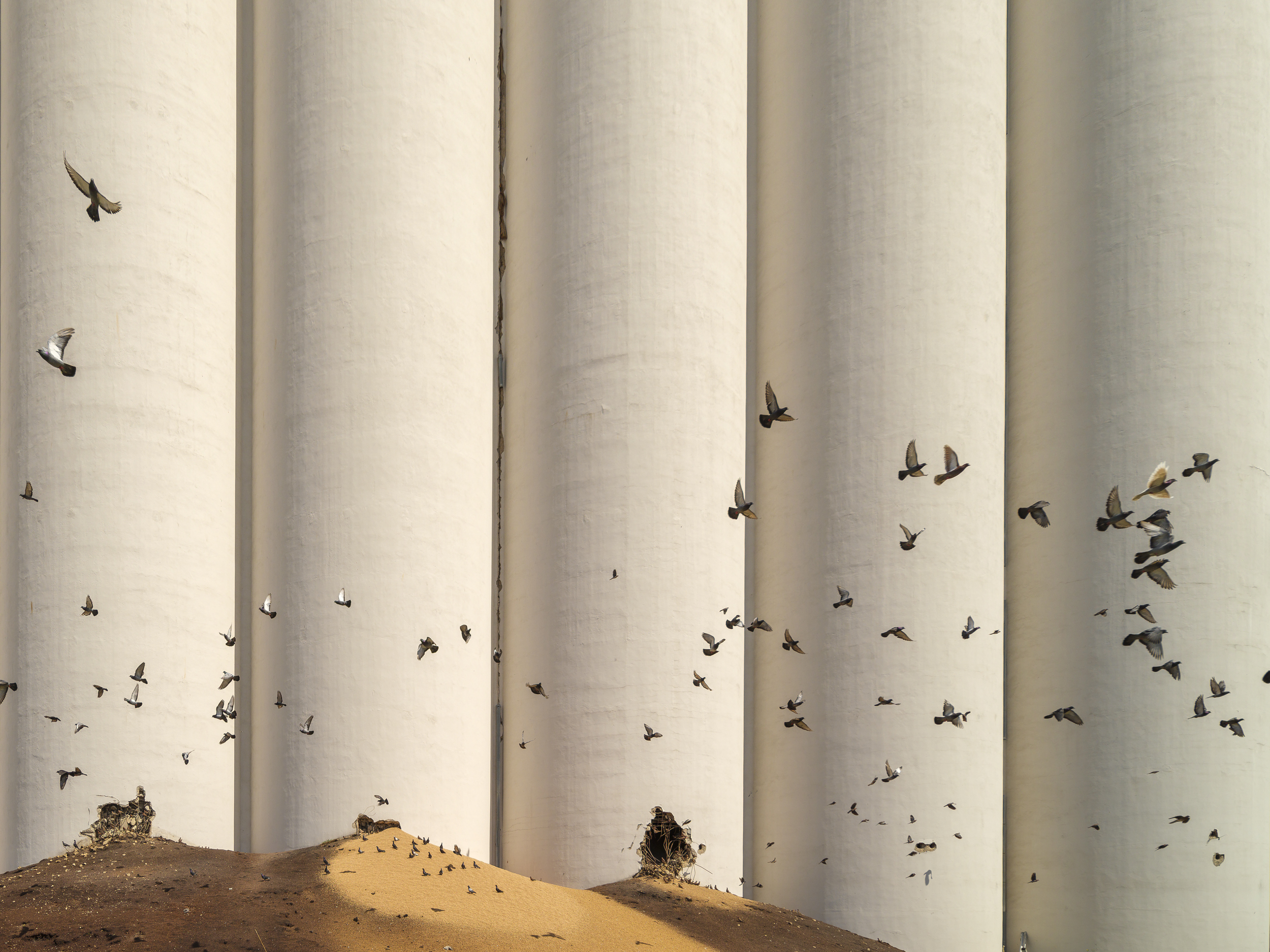
‘Birds of Hell', Port of Beirut
W*: How were these two series born?
DM: ‘The Silos Experience' was born out of a series of visits to the ground zero blast site of Port of Beirut in March and April 2021 respectively, but predominantly it was based on my first visit on 27 March. This experience came about through a French engineer, Emmanuel Durand, who encouraged me to engage with him as he had been volunteering on site since September 2020, doing a structural analysis study to determine the stability of the grain silos after the blast. We developed an online friendship and he wanted someone with a local perspective that advocates for heritage preservation to go down to the blast site area. This led to the series and the exhibition. Though my work on the silos has been described as ‘surrealist' and ‘expressionist', it is really the damage and the destruction of the architecture of the city that remains in my eyes ‘surrealist'. Part of me still cannot process that this happened!
When the explosion took place, something was triggered in me. I was right there in Mar Mikhaël, in the midst and epicentre of it, riding my Vespa, going to a shoot. After picking myself up from under the bike, I took a few shots of what I thought was the world ending. One of the thoughts that raced through my head was that if another explosion happens and we die, the camera is destroyed but the SD card could still provide insight into what was unfolding. It felt like an urge for something that needed to be recorded. The show is meant to revisit that feeling.
Receive our daily digest of inspiration, escapism and design stories from around the world direct to your inbox.
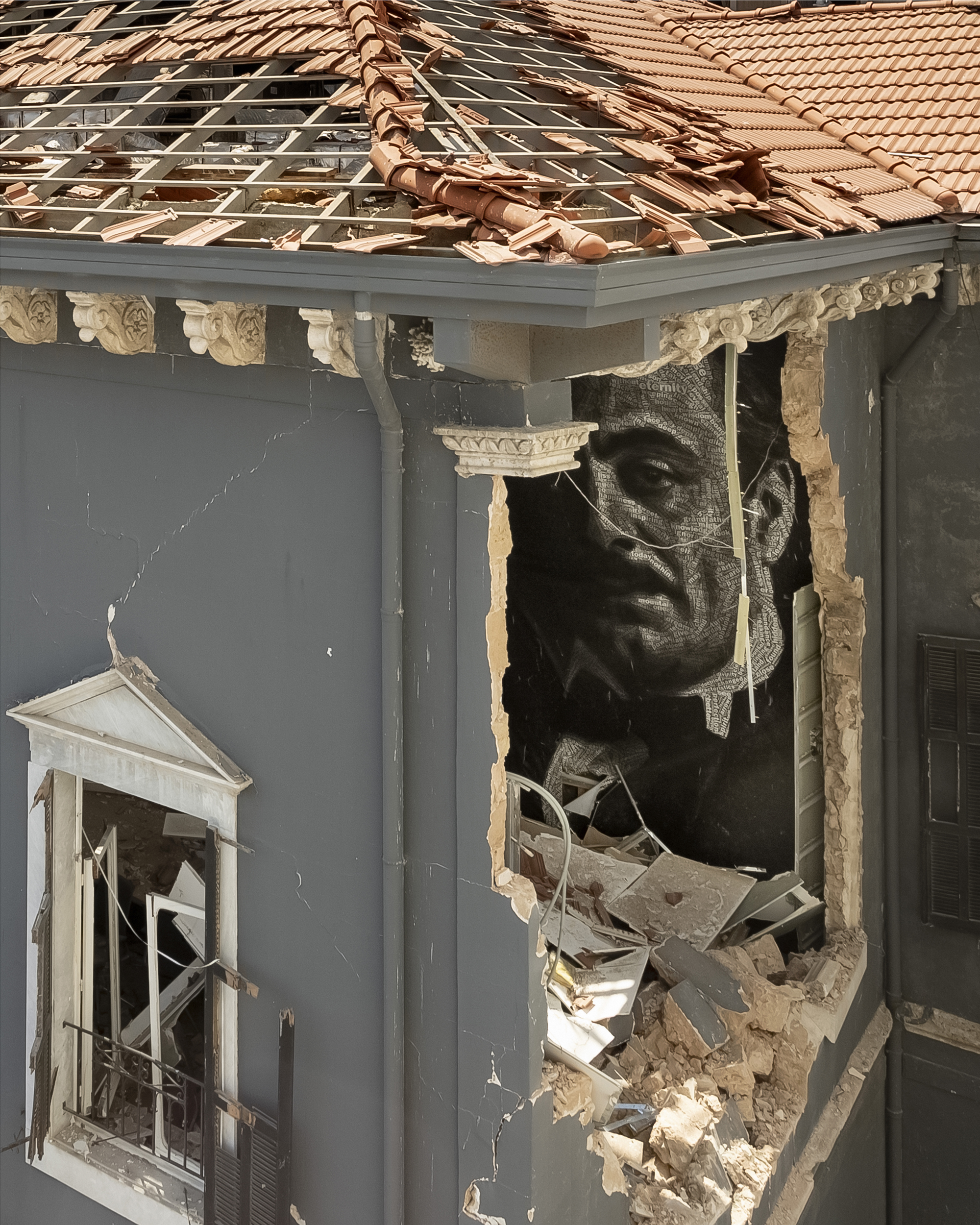
‘Gibran Khalil Gibran', Quantum House
W*: What were you seeking to capture?
DM: My visit to the blast site. The experience directs the outcome. My photography relies on exploration and discovery, on unplanned journeys that I find myself in, and where I completely let go and surrender to the experience. It is then that the work produced turns out ‘different'. What I usually seek to capture is the raw unbeautified truth, but framing it in a relatable yet unordinary way. What attracts me in a shot is the straightness of the architectural lines, the ability to show an entire building façade, as if it is an axonometric view on a 3D or design software.
I love to show architectural details, but also the general vibe of the architecture and its influence on the street and surroundings. I try to do that without actually showing the context, but rather reflecting it in a way, while focusing on architecture. I focus on symmetry. The architecture of Beirut, and especially the traditional, heritage architecture, can be completely symmetric – floorplans, façades and even sections, often showcase perfect symmetry in dimensions and also interior functions. This type of architecture has been a big influence on my framing.
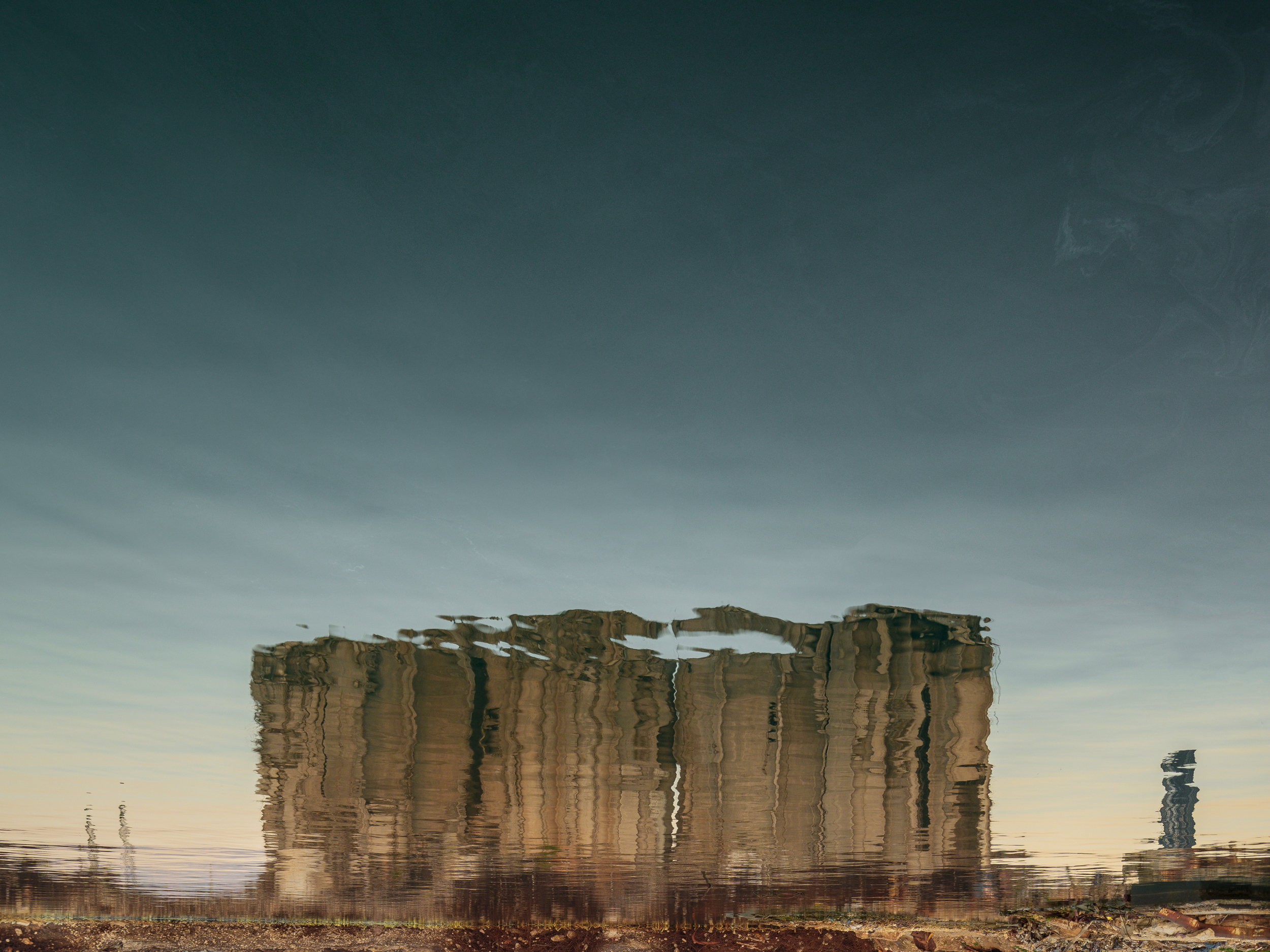
‘Oil on Water', Port or Beirut
W*: Please could you tell us a bit more about the locations where you shot?
DM: ‘The Silos Experience’ series was shot entirely at the port of Beirut. The first section of ‘The Morning After' contains three pieces shot inside the Sursock Palace, on Rue Sursock, a true gem of Lebanese architecture, that was heavily damaged by the explosion. Another photograph was shot inside the staircase of the Tueni-Bustros palace in Achrafieh. The piece Gibran Khalil Gibran was shot right after my visit to the Sursock Palace and arriving at the Quantum House (or Villa Mokbel) on the same street, where I noticed a collapsed wall on the first level of the villa. I went inside the building facing it, and got a shot that was a turning point in my practice. The shot of the poet [Lebanese-American writer, poet and visual artist Gibran] peeking through the destruction soon became a symbol of the tragedy laid upon Beirut and the indescribable damage done to the people, the architecture, the art, the culture, the social fabric... and this shot was able to convey all that. There are also shots created inside apartments in Mar Mikhaël.
W*: What would you like the viewer to take away from this show and series?
DM: This show is meant to take the viewer on a journey as close as possible to my own explorative discovery of the blast site recently, and of the destroyed architecture earlier. It is meant to give facts, but leave a space open for interpretation and personal conclusions and impressions. It is why the show and display were set up to present the work in an unfolding pattern, similar to how the scene unfolded before my eyes. I wanted to bring the silos to the city, for example, since people cannot go down there.
W*: Were there any challenges in producing the series?
DM: The most challenging part of producing ‘The Silos Experience' was the actual overwhelming experience in itself. It was shot in confusing and dangerous surroundings. Navigating the site was tricky and a nerve-racking business, as at the time the engineering studies were not complete. We had no idea what was safe and what was not. Luckily, Emmanuel is an expert on the matter and was able to determine, if not 100 per cent, the relative safety of certain areas we could venture into. The biggest challenge, however, I believe came after the shots were done, and when I went back and started selecting and editing. I had so many strong shots. It was a very lengthy process.
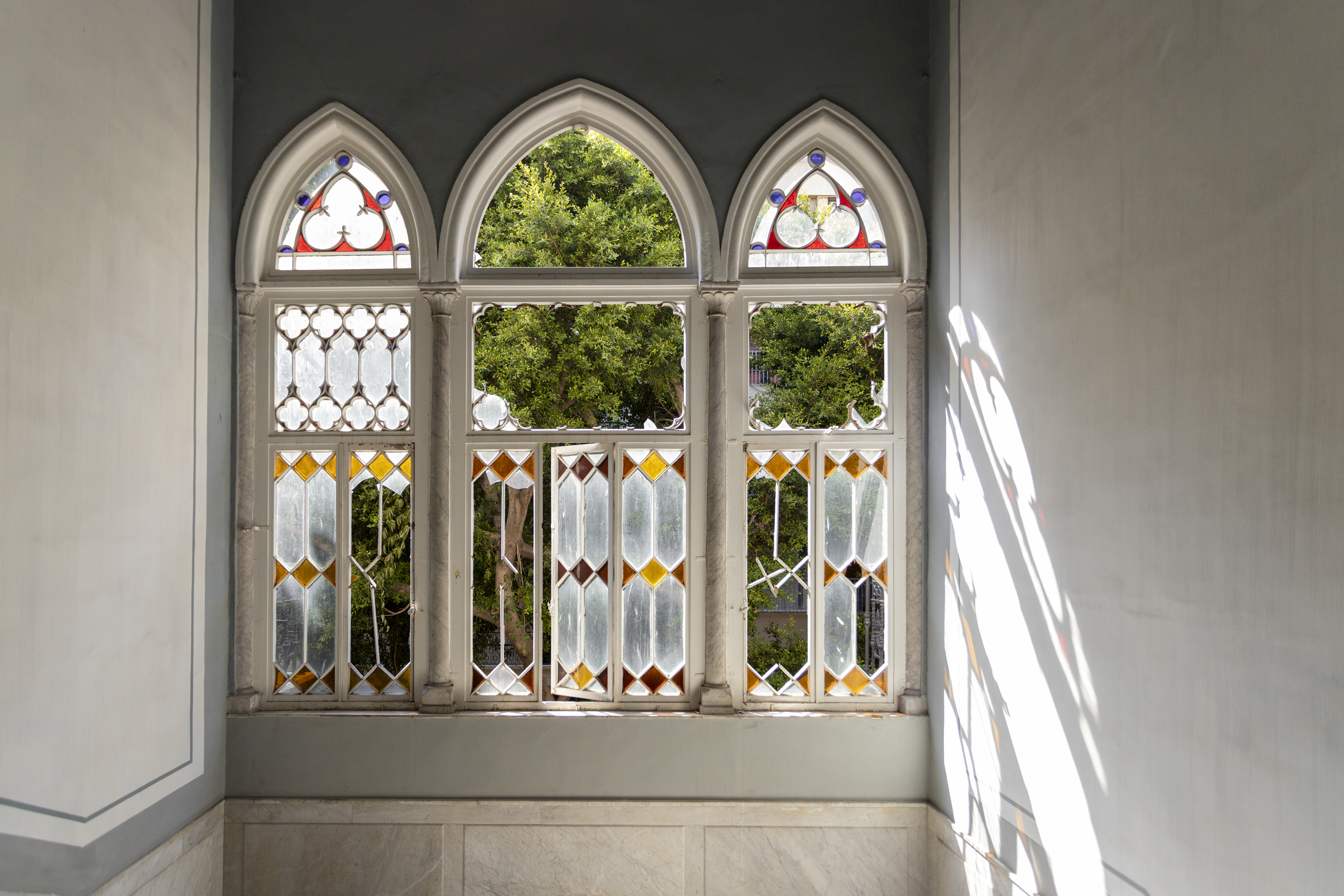
‘Triple Threat', Tueini Bustros Sehanoui Palace
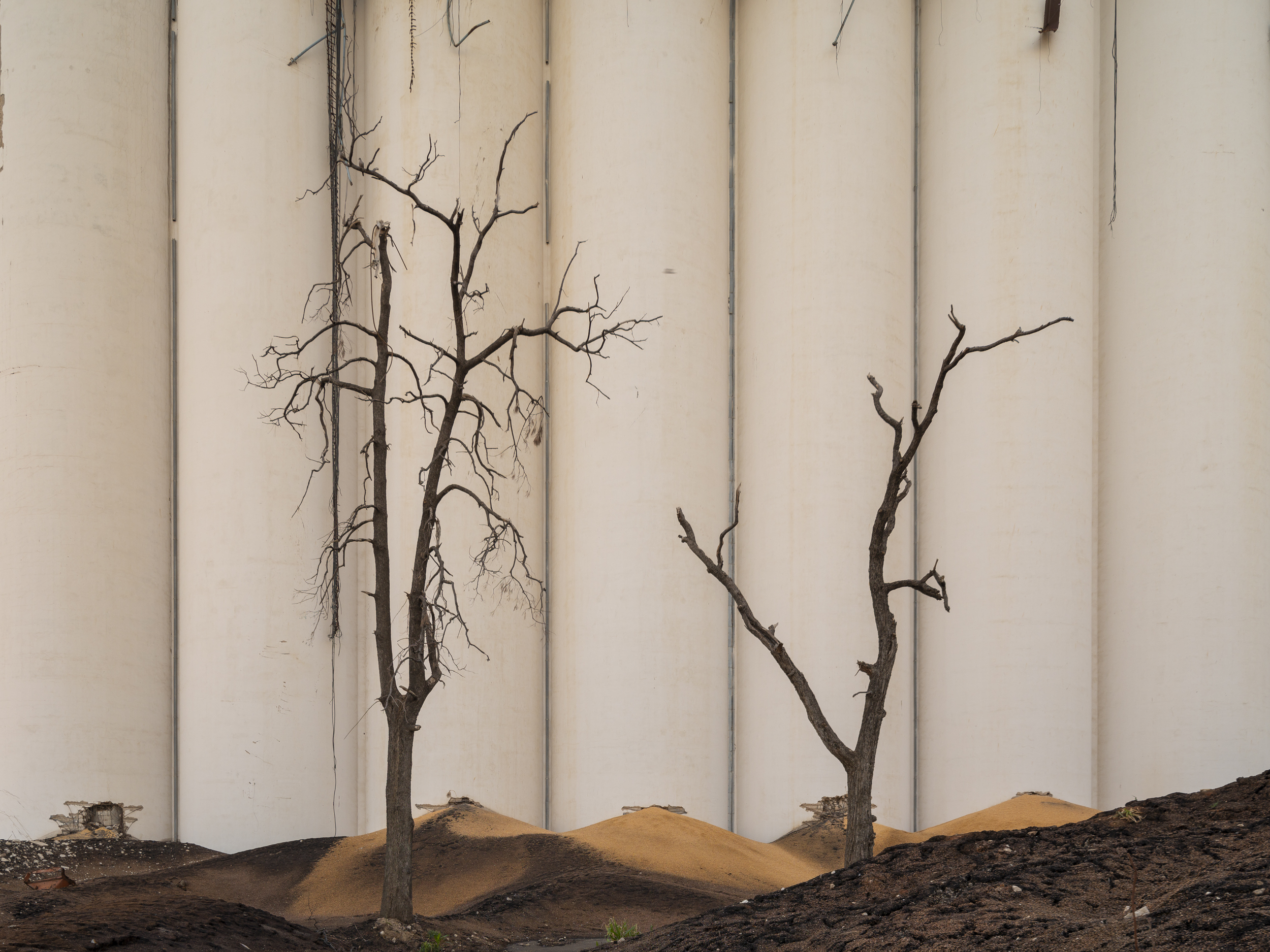
‘Trees of Apocalypse', Port of Beirut

‘Always Forever', Sursock Palace
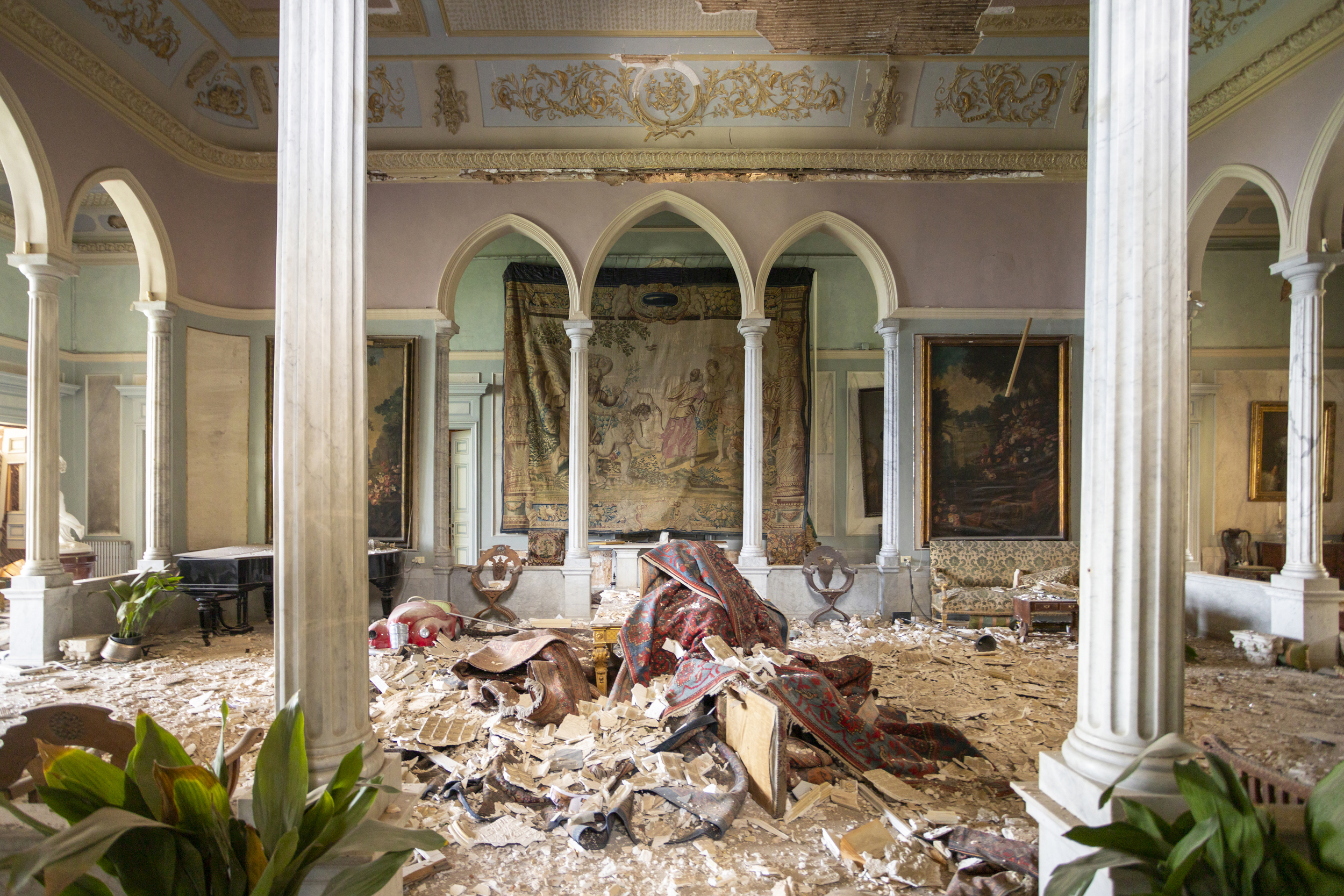
‘Icon', Sursock Palace
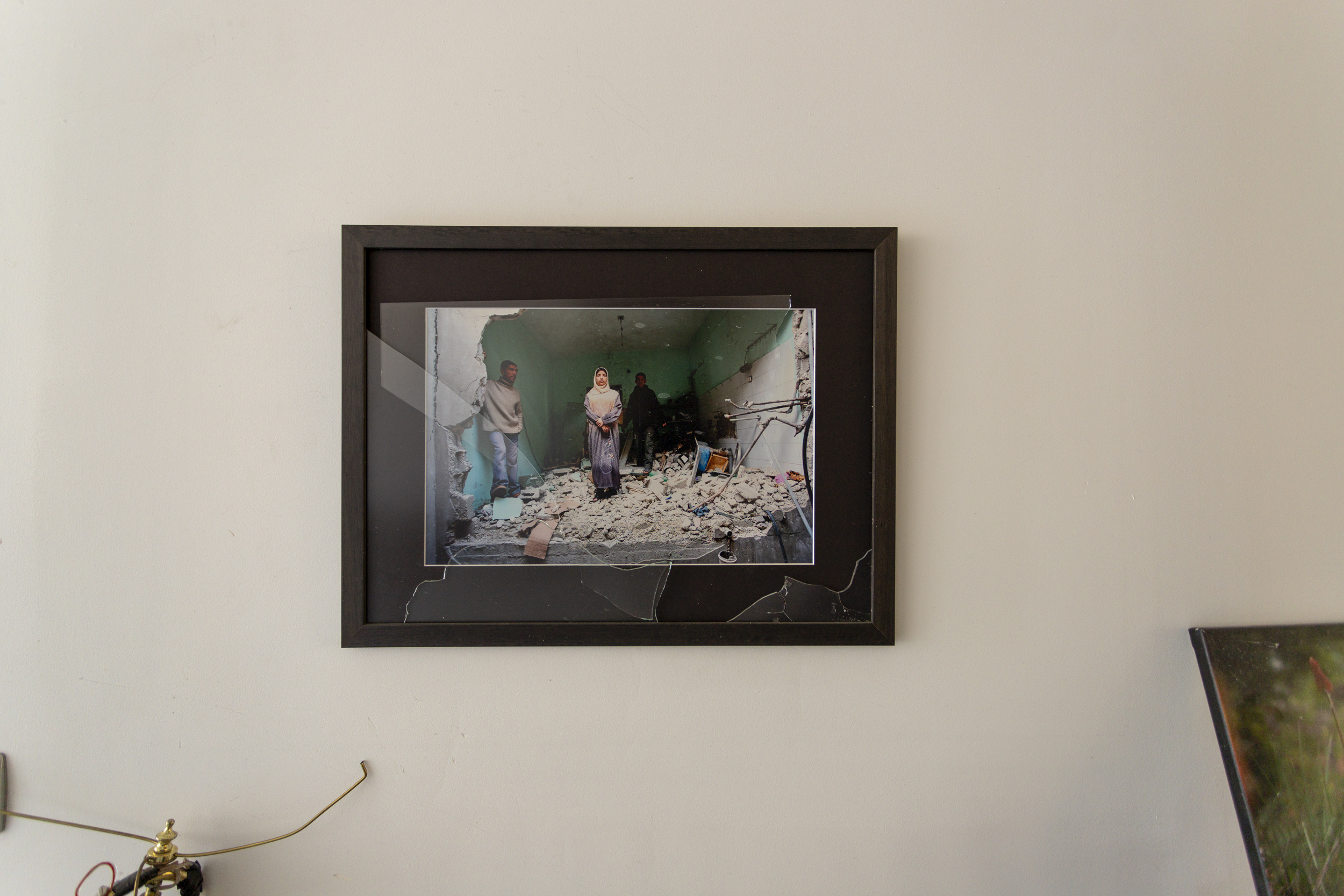
‘Gaza in Beirut', Apartment in Mar Mikhael
INFORMATION
’The Road to Reframe’ by Dia Mrad is on view at the Arthaus, Gemmayzeh in Beirut, Lebanon until 6 July 2021
Ellie Stathaki is the Architecture & Environment Director at Wallpaper*. She trained as an architect at the Aristotle University of Thessaloniki in Greece and studied architectural history at the Bartlett in London. Now an established journalist, she has been a member of the Wallpaper* team since 2006, visiting buildings across the globe and interviewing leading architects such as Tadao Ando and Rem Koolhaas. Ellie has also taken part in judging panels, moderated events, curated shows and contributed in books, such as The Contemporary House (Thames & Hudson, 2018), Glenn Sestig Architecture Diary (2020) and House London (2022).
-
 ‘I want to bring anxiety to the surface': Shannon Cartier Lucy on her unsettling works
‘I want to bring anxiety to the surface': Shannon Cartier Lucy on her unsettling worksIn an exhibition at Soft Opening, London, Shannon Cartier Lucy revisits childhood memories
-
 What one writer learnt in 2025 through exploring the ‘intimate, familiar’ wardrobes of ten friends
What one writer learnt in 2025 through exploring the ‘intimate, familiar’ wardrobes of ten friendsInspired by artist Sophie Calle, Colleen Kelsey’s ‘Wearing It Out’ sees the writer ask ten friends to tell the stories behind their most precious garments – from a wedding dress ordered on a whim to a pair of Prada Mary Janes
-
 Year in review: 2025’s top ten cars chosen by transport editor Jonathan Bell
Year in review: 2025’s top ten cars chosen by transport editor Jonathan BellWhat were our chosen conveyances in 2025? These ten cars impressed, either through their look and feel, style, sophistication or all-round practicality
-
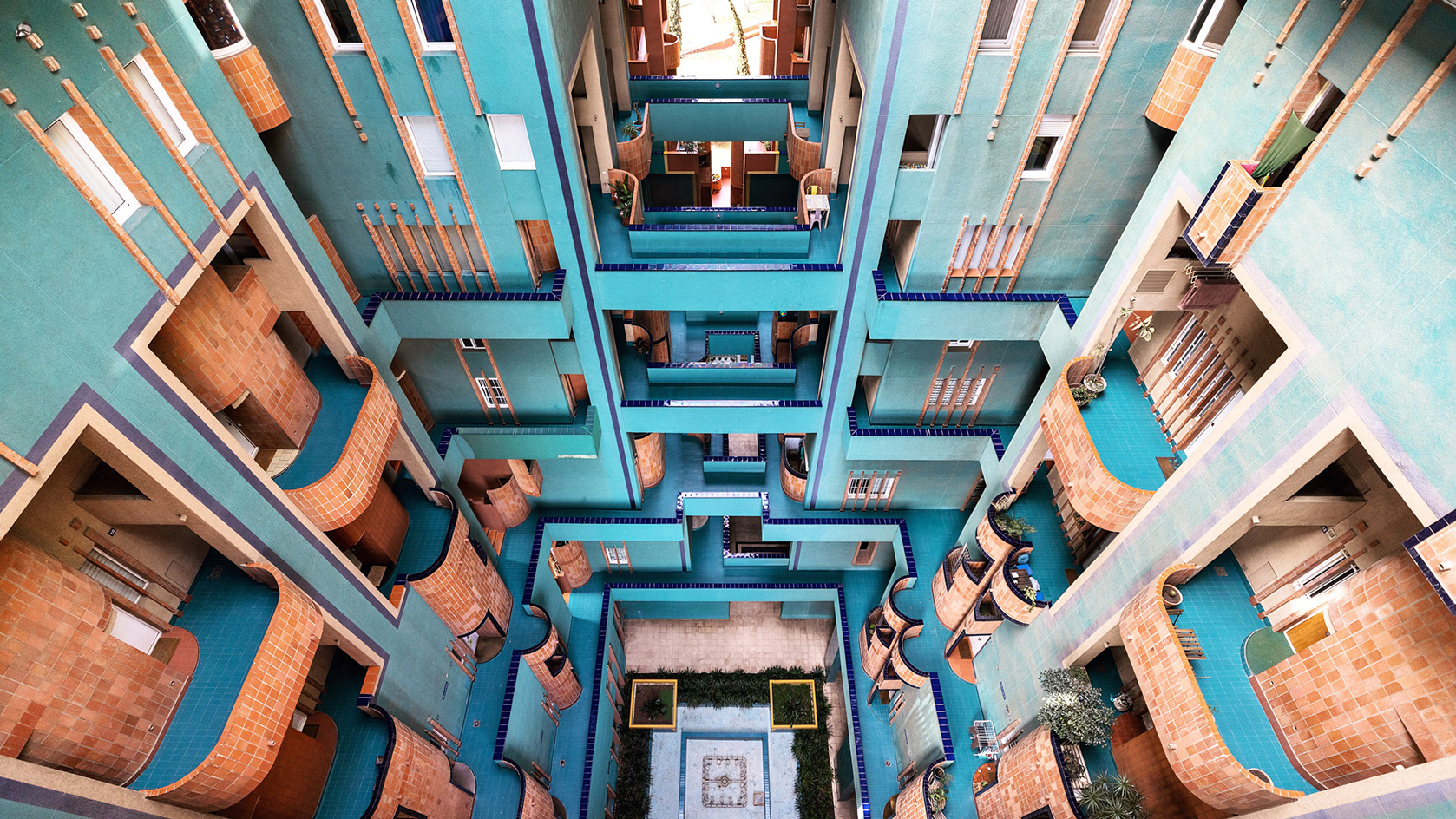 Inside Ricardo Bofill’s Walden 7, a cathedral of postmodern curiosity
Inside Ricardo Bofill’s Walden 7, a cathedral of postmodern curiosityA new series by architectural photographer Sebastian Weiss takes us on a tour of Walden 7, Ricardo Bofill’s majestic Catelonian apartment building – a cathedral of utopian curiosity and community
-
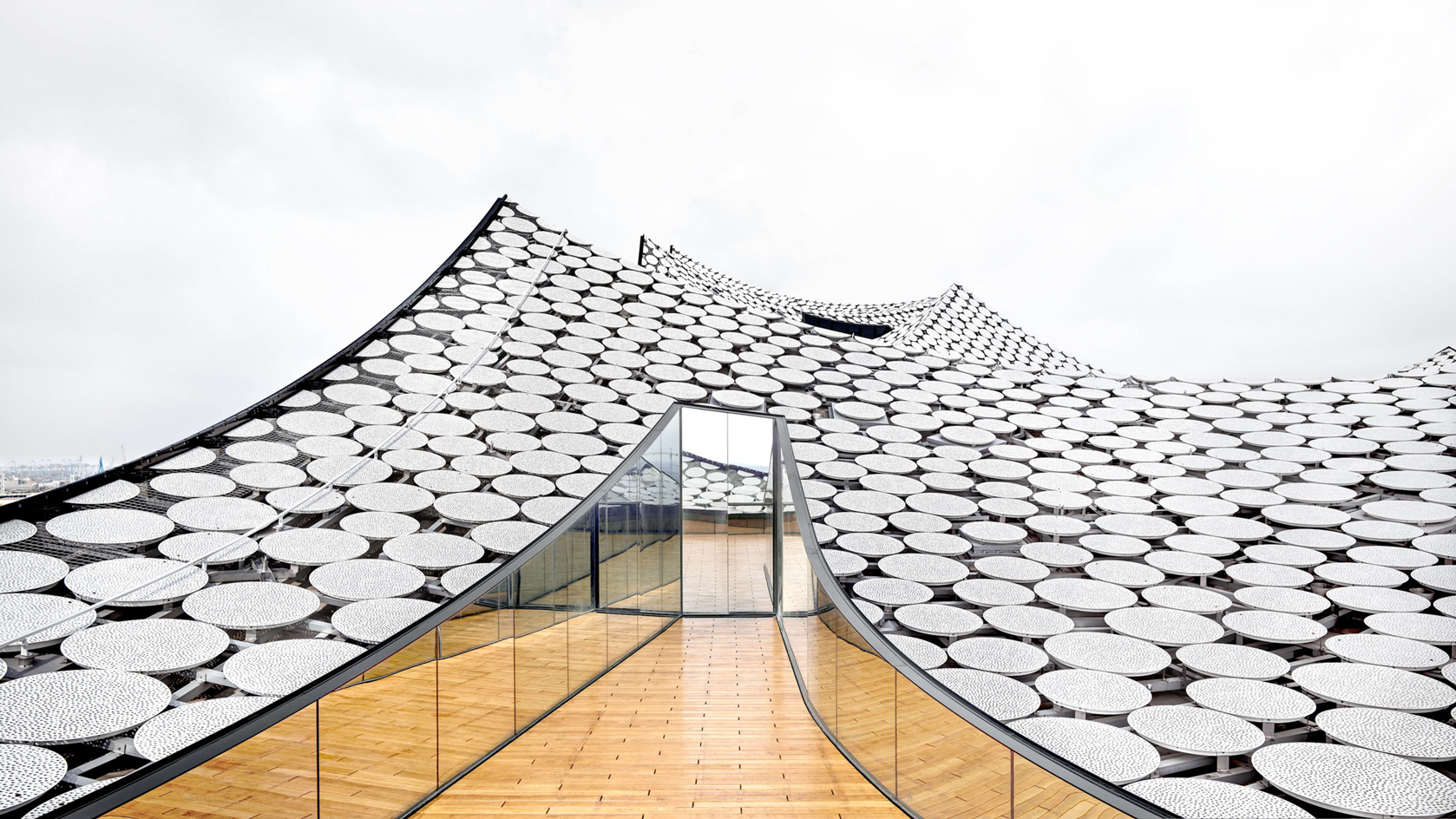 Heaven on Earth: architect Toshiko Mori curates Candida Höfer’s sublime new photography show
Heaven on Earth: architect Toshiko Mori curates Candida Höfer’s sublime new photography showAt Sean Kelly, New York, architect Toshiko Mori is curating a new show by Candida Höfer, spanning a 30-year period of the German photographer’s spatially sublime work
-
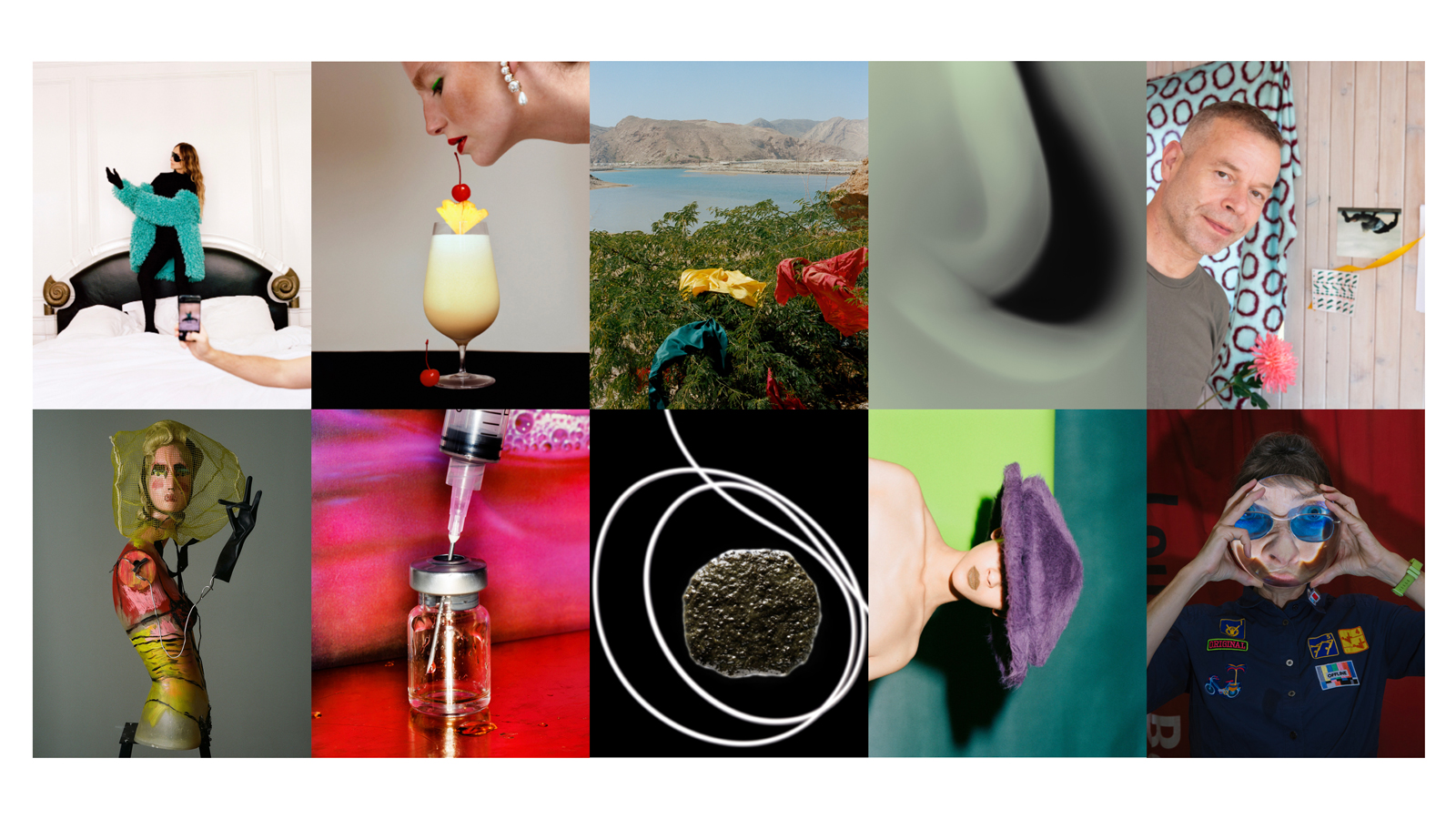 10 Wallpaper* photography moments of 2022, from piña coladas to Pipilotti Rist
10 Wallpaper* photography moments of 2022, from piña coladas to Pipilotti RistThe most memorable Wallpaper* photography moments of 2022, courtesy of our esteemed photo desk
-
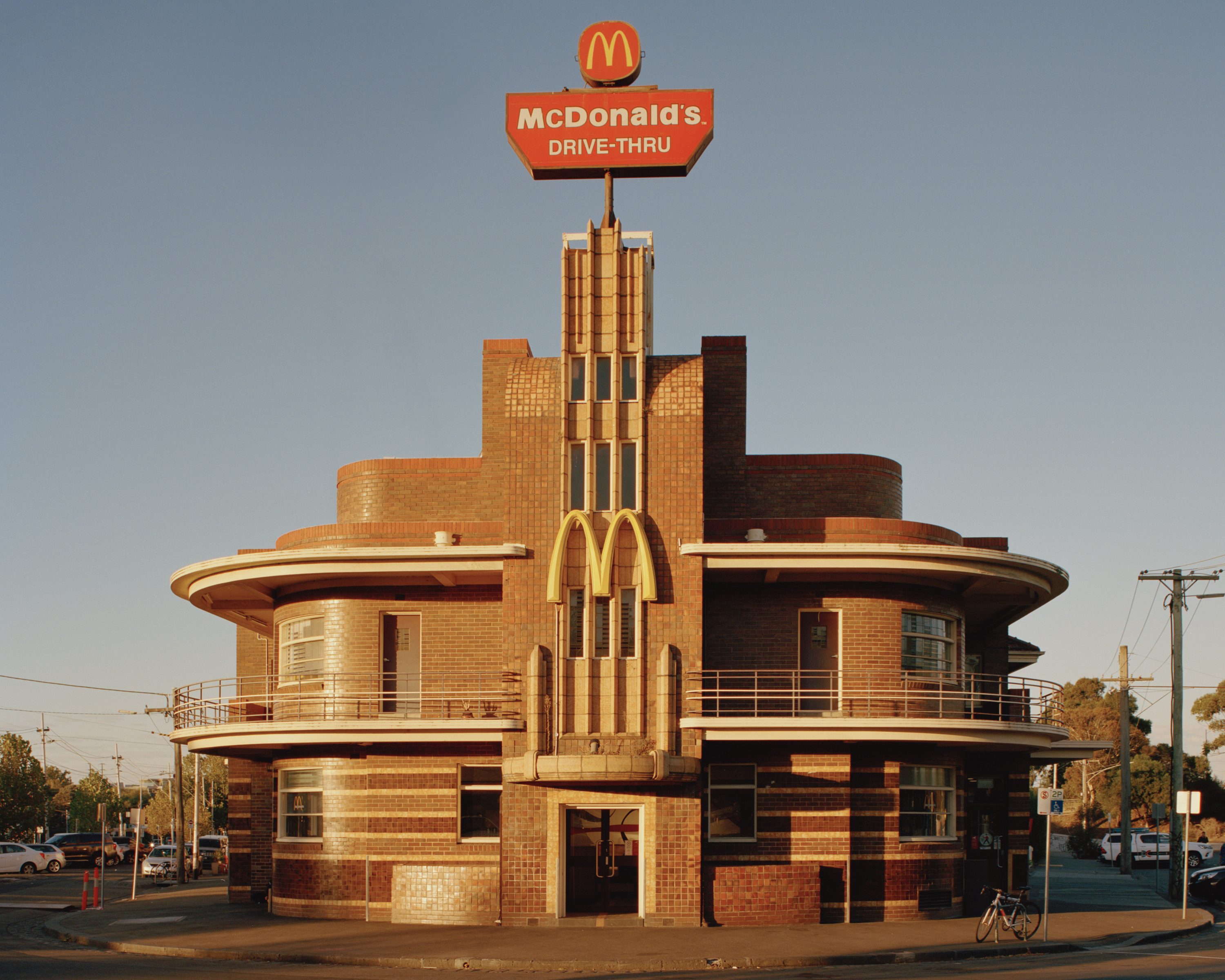 ‘Site Unseen’ explores viewing and documenting architecture through photography
‘Site Unseen’ explores viewing and documenting architecture through photographyThe Center of Contemporary Photography in Melbourne invites us to ‘Site Unseen', an exhibition about different ways of viewing and documenting architecture
-
 Ricardo Bofill’s La Muralla Roja as captured by Sebastian Weiss
Ricardo Bofill’s La Muralla Roja as captured by Sebastian WeissAs a tribute to architecture icon Ricardo Bofill (1939 – 2022) we revisit Hamburg-based photographer Sebastian Weiss’ captivating photo series on ‘La Muralla Roja’, first published in 2020
-
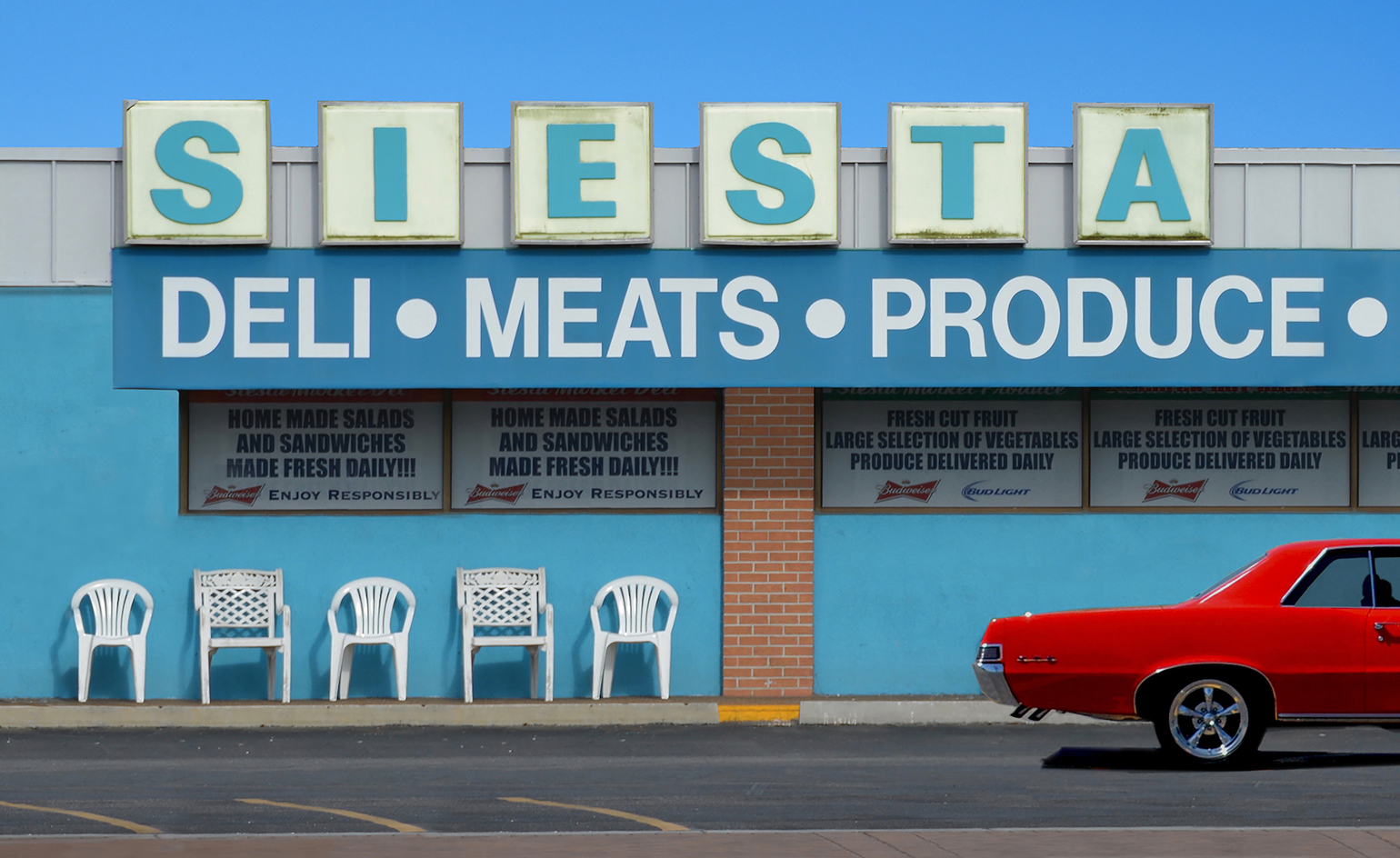 A photographic trip through America’s roadside façades
A photographic trip through America’s roadside façadesIn her ongoing series, The Mother Road, Hayley Eichenbaum documents the tainted romanticism of roadside architecture on Route 66 in the American Southwest
-
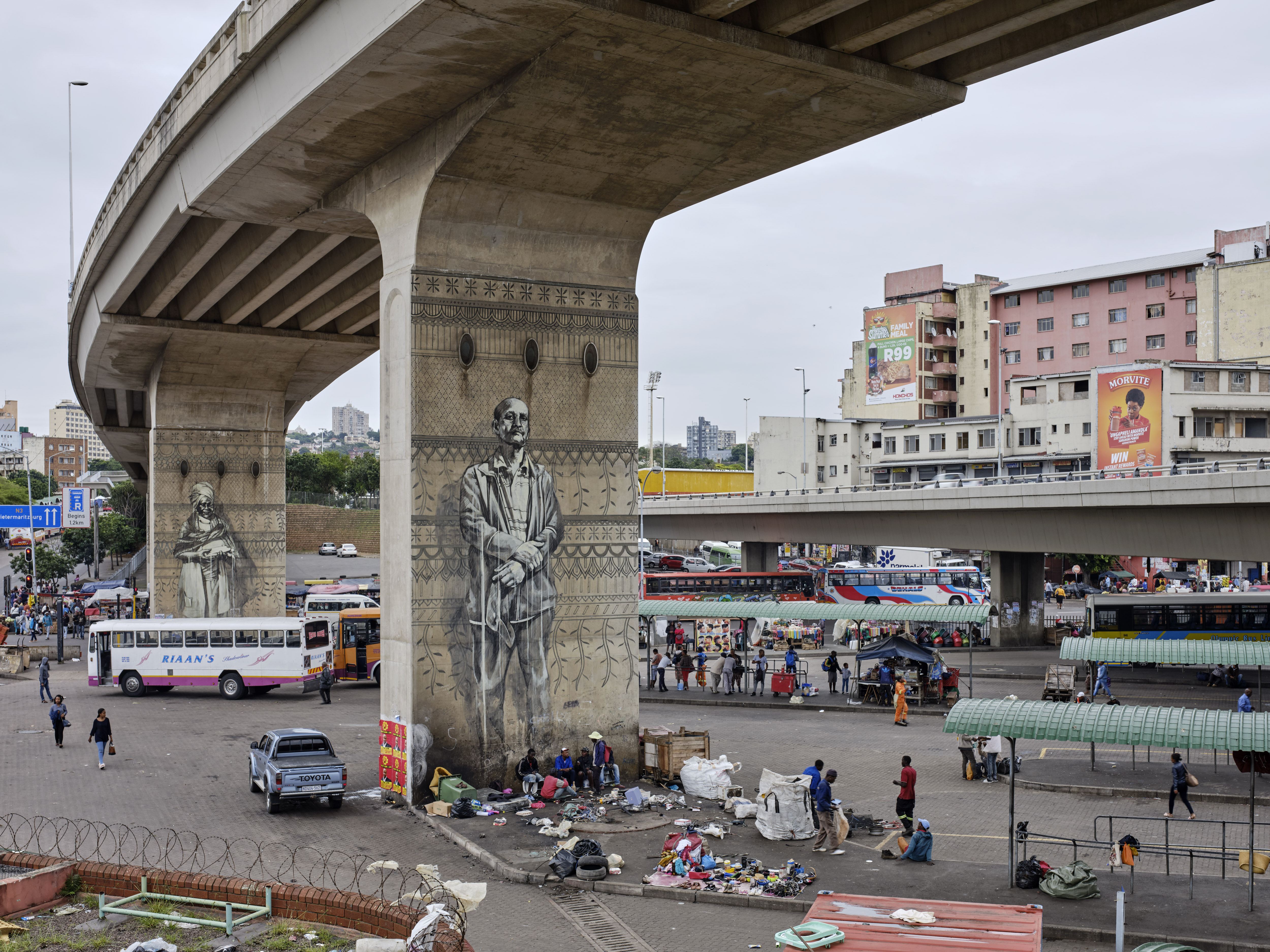 Architectural photographer Dennis Gilbert (1951-2021): an appreciation
Architectural photographer Dennis Gilbert (1951-2021): an appreciationArchitectural photographer Dennis Gilbert has died aged 70. Founder of View Pictures, one of the foremost agencies for architectural imagery, and an honorary fellow of RIBA, he helped shape our perception of contemporary architecture
-
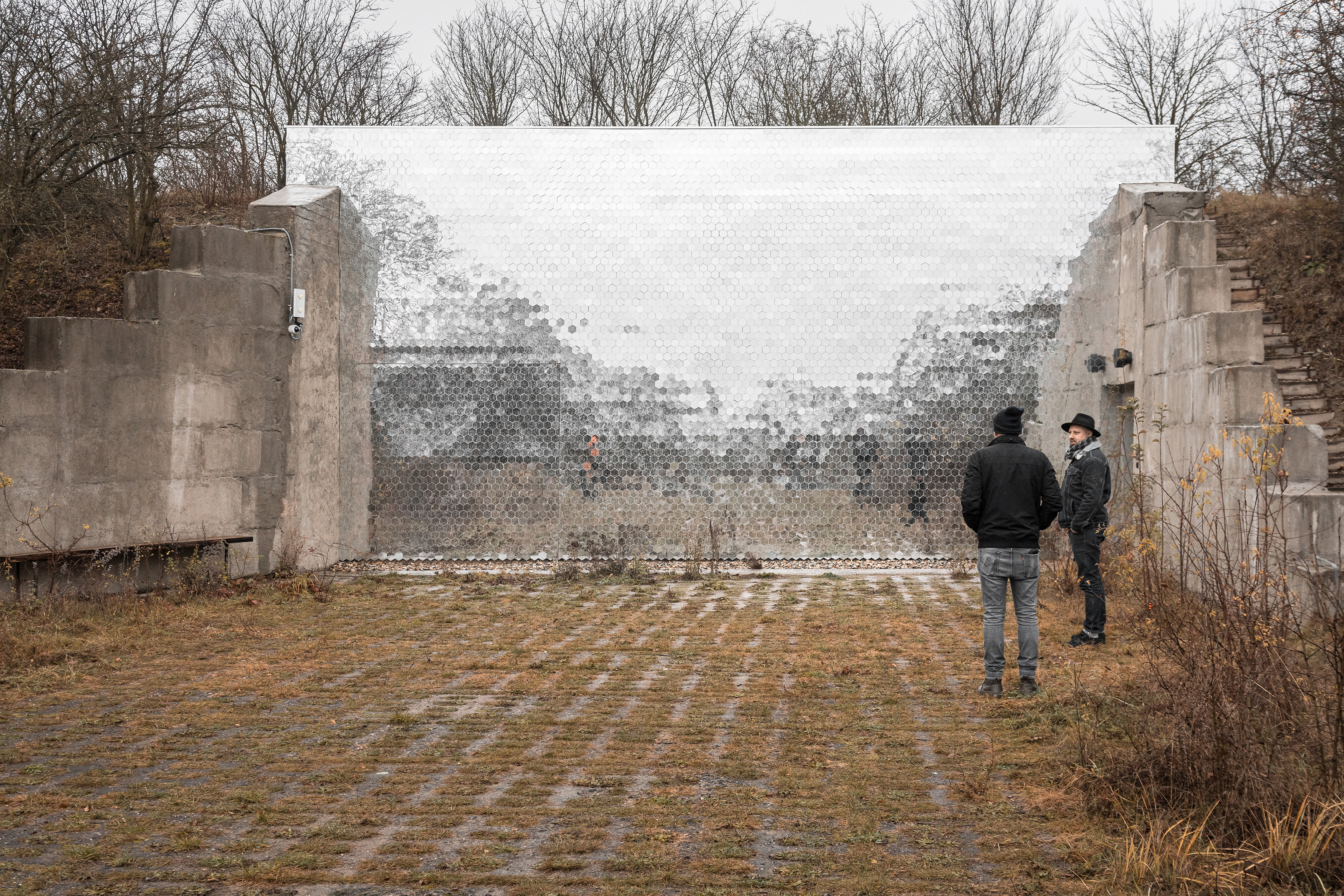 Sony World Photography Award names best architecture images for 2021
Sony World Photography Award names best architecture images for 2021The 2021 Sony World Photography Award has announced its winners, including two categories focusing on architectural photography